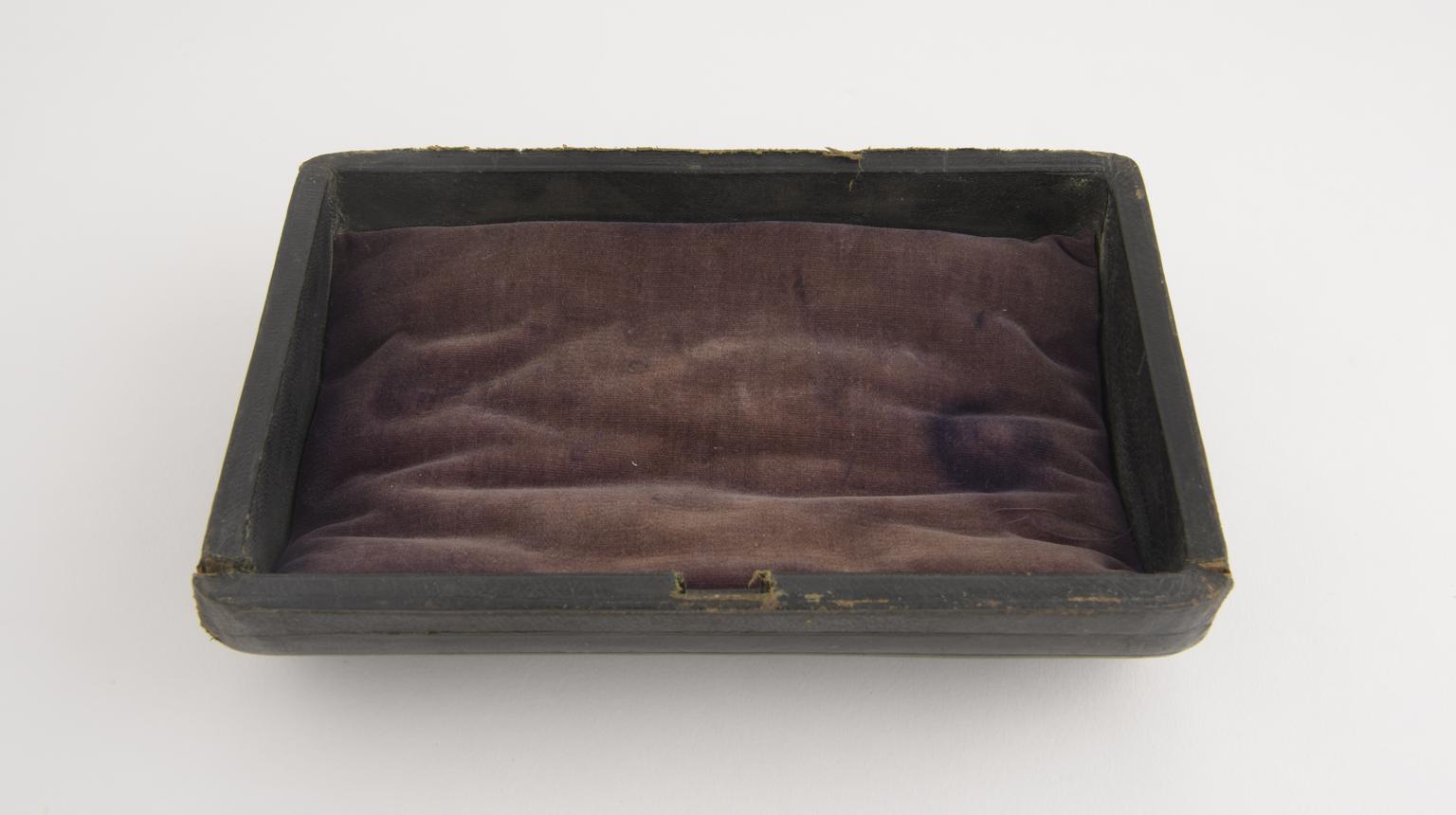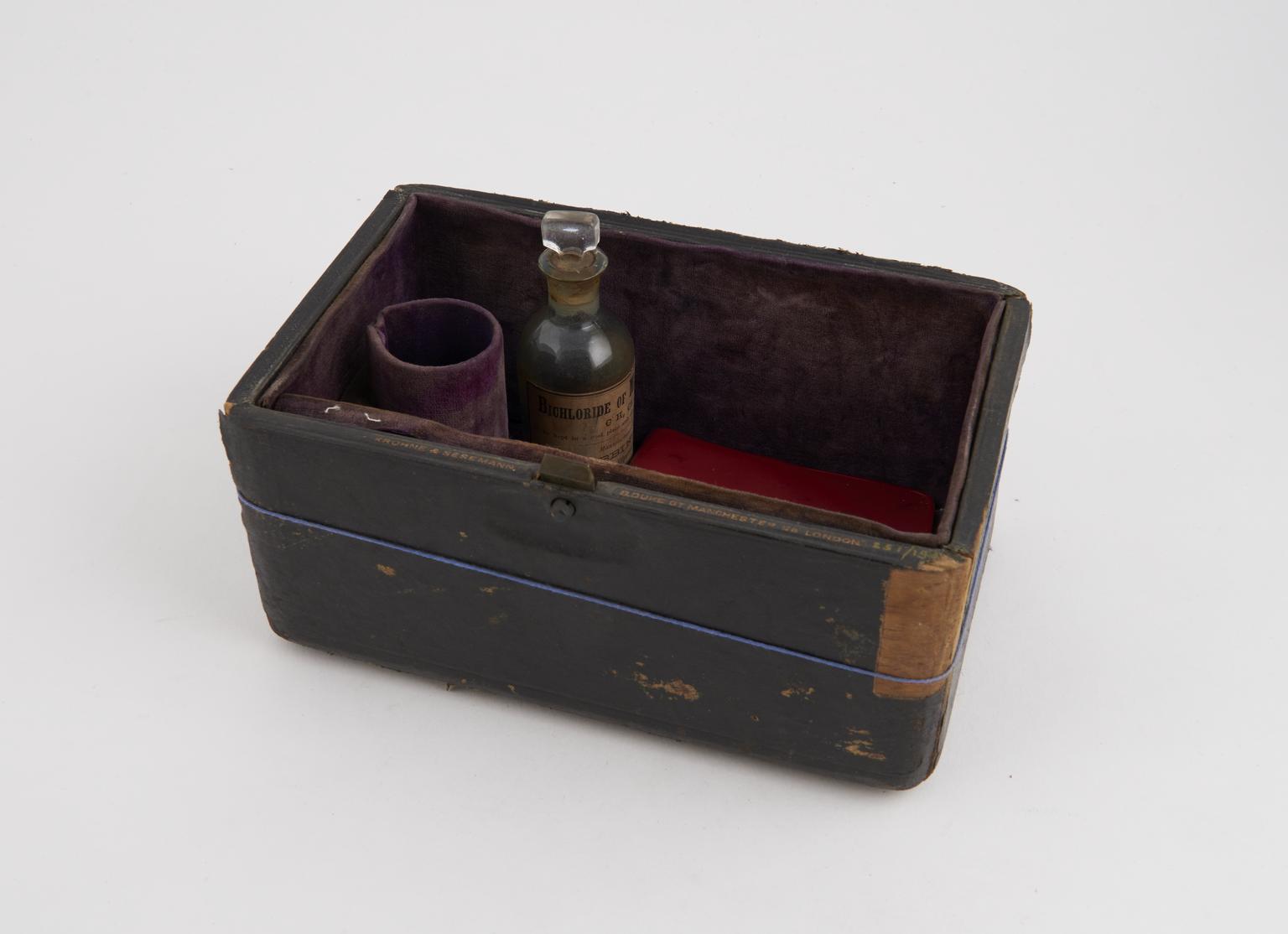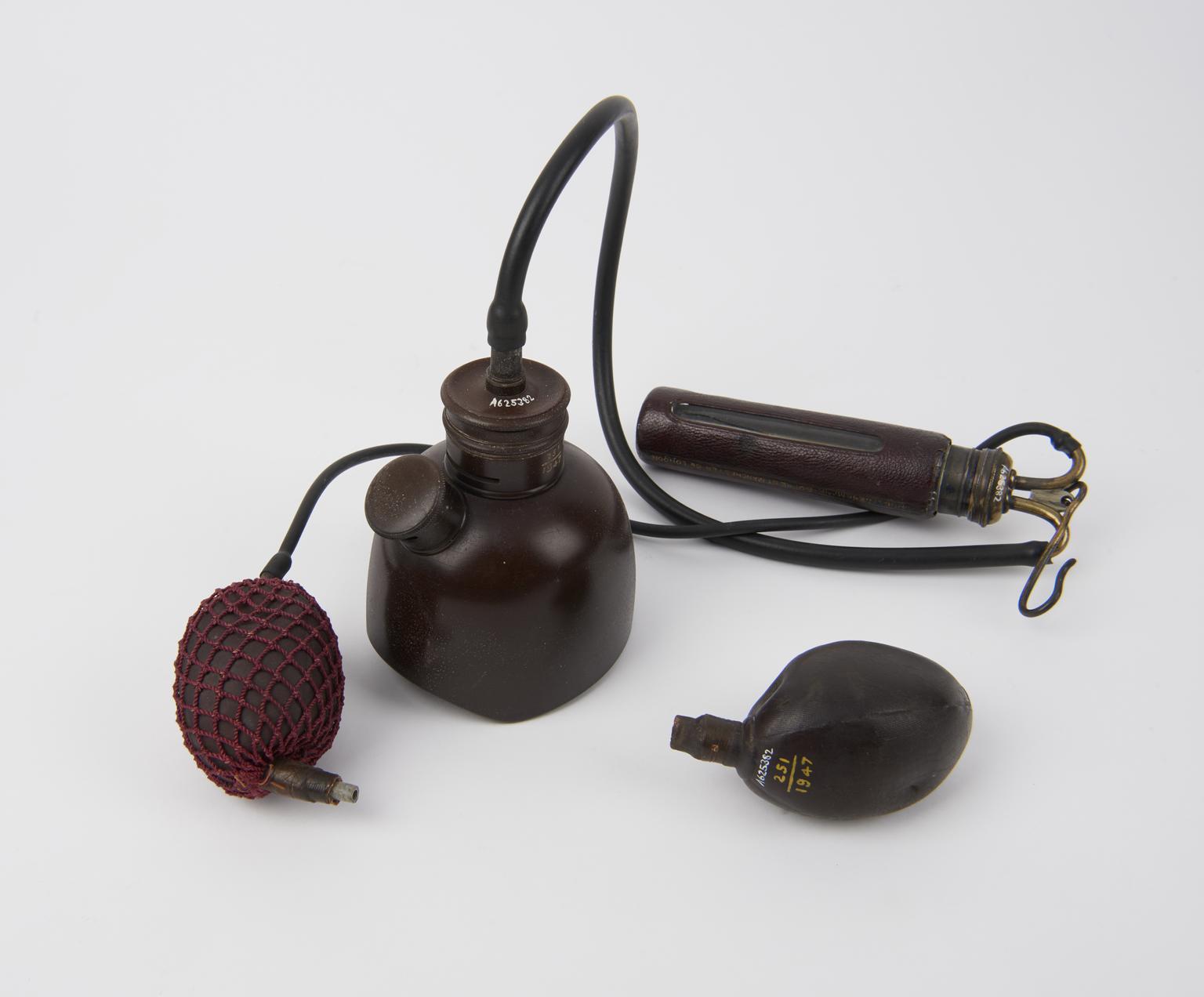
Lid for Case for Junker-type inhaler for anaesthesia
Lid for case for Junker's inhaler for bichloride of methylene or chloroform anaesthesia, by Krohne and Sesemann, London, 1867-1880

Junker's inhaler for bichloride of methylene or chloroform anaesthesia, cased, early type, by Krohne and Sesemann, London, 1867-1880
Ferdinand Ethelbert Junker (1828-1901) (sometimes spelt Ferdinand Adalbert Juncker) invented this type of inhaler in 1867. It was to be used with bichloride of methylene or chloroform as the anaesthetic. A graduated bottle of liquid anaesthetic in a leather case that hung from the anaesthetist’s lapel was connected to a hand pump, which was used to push air into the bottle. The vapour this created passed along rubber tubing to a face mask. This ‘blow over’ or ‘bubble through’ technique became one of the most popular for giving anaesthetics. It could be used to regulate the dosage easily but care had to be taken when connecting for use – if incorrectly put together the patient could swallow liquid chloroform.

Lid for case for Junker's inhaler for bichloride of methylene or chloroform anaesthesia, by Krohne and Sesemann, London, 1867-1880

Case for Junker's inhaler for bichloride of methylene or chloroform anaesthesia, by Krohne and Sesemann, London, 1867-1880

Junker's inhaler for bichloride of methylene or chloroform anaesthesia,early type, by Krohne and Sesemann, London, 1867-1880
Empty bottle of Bichloride of Methylene by J. Robbins & co., 372 Oxford Street London, 1867-1880. For use with Junker's inhaler for bichloride of methylene or chloroform, anaesthesia, early type, by Krohne and Sesemann, London, 1867-1880
Tubing for Junker's inhaler for bichloride of methylene or chloroform anaesthesia, by Krohne and Sesemann, London, 1867-1880